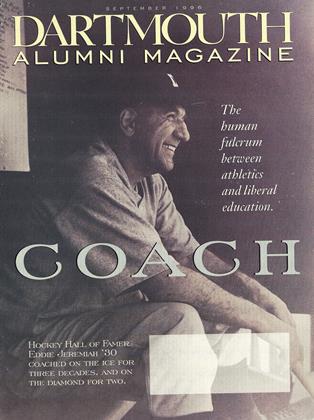Cults, Cuckoos, and Electric Kool-Aid
Douglas Coupland, Generation X: Tales ForAn Accelerated Culture (St. Martin's Press, 1991) Three disaffected characters present themselves as models for potential modern dropouts. The book trivializes the generation it purports to represent, and reduces cultic behavior to childishness; but it is funny and, apparently, has struck a sympathetic chord with restless, young readers.
Eldridge Cleaver, Soul On Ice (first published 1968; Dell, 1991) While in Soledad state prison, Cleaver wrote these influential essays about race, rage, resistance, and possibilities for reform, both personal and political.
Ernest Hpningway, The Sun Also Rises(iirst published, 1926; Scribner,1970)Hemingway'sfirst novel introduced the way of life of expatriates who lived by acode of their own. Readers wanted to be "one of us," to quote a famous phrase from the book; some set out to live in the disaffected style of Hemingway's characters, and many achieved fame of their own by imitating Hemingway's distinctive style of writing.
Ken Kesey, One Flew Over the Cuckoo's Nest (first published 1962; Penguin, 1992) Kesey's terrifying descriptions of electric shock treatment and mind control within mental hospitals affected psychiatric thinking as well as publicopinion. The book's plea for individual freedom and its misogynistic portrayal of Big Nurse have contributed to the novel's popularity and the controversy it continues to evoke.
Jack Kerouac, The Town and the City (first published 1950; Harcourt Brace, 1983)-Kerouac's early novel describes a way of life that the Kerouac hero had and lost. In the town, he had a family, community, and church. In the city, he began to drift, and the family to dissolve. World War II brought further dissolution of the cohesive life the Kerouac hero had known. Disaffected, alone, he headed for the road. On the Road (first published 1957; Penguin, 1991) Kerouac's portrayal of the Beat Generation left a legacy of cultic values that still exerts social force.
Meridel Le Sueur, The Girl (first published 1948; Wesc End Press, 1990) Le Sueur's rare account of women trying to survive the Great Depression provides a striking contrast with novels about men and by men, dramatizing cultic values that draw women together and setting them against those that keep men apart.
Blanche H. Gelfant, '"Everybody Steals': Language as Theft in Meridel Le Sueur's The Girl," in Tradition and the Talents of Women, edited in Florence Howe .(University of Illinois Press, 1991) 'The essay analyzes the language and themes of the novel and sets it within feminist, cultural, and theoretical contexts.
Tom Wolfe, The Electric Kool Aid Acid Test (first published 1968; Bantam, 1983) Wolfe followed Ken Kesey and his "Merry Pranksters" on a wild trip through America on their psychedelic bus. "You're on the bus or off," Wolfe reported Kesey saying and many wanted to climb aboard.
Gelfant
 View Full Issue
View Full Issue
More From This Issue
-
 Feature
FeatureThe Language of Innocence
September 1996 By KATE COHEN '92 -
 Cover Story
Cover StoryBAKER WAS THE BACKDROP
September 1996 -
 Feature
FeatureStaying Clear
September 1996 By Jeanet Hardigg Irwin '80 -
 Feature
FeaturePassion
September 1996 By Fiona Bayly '89 -
 Feature
FeatureConfidence
September 1996 By Paid Tsongas '62 -
 Feature
FeatureFaith
September 1996 By Seward, "Pat" Brewster '50







